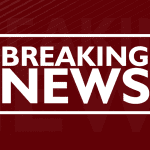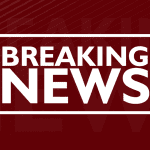In the 15th century, India was very famous all over the world for its diamonds, gems and especially spices (black pepper, cardamom, cinnamon etc.), due to which there was a competition between Europe and Arab countries for doing business with India at that time. was. At that time, trade with the major countries of Asia, such as India, China, Myanmar, etc. was done only through the terrestrial route, which was used only by Muslim rulers and traders. The Muslim rulers did not allow the Europeans to trade by that route.
To eliminate the problem of trade route, many European countries tried to find a sea route between Europe and India, but only Portugal was successful in them. But do you know, Bharat ki khoj kisne ki thi? That is, for the first time, who had discovered the path of coming from Europe to India by sea? So tell me, he was the first Portuguese man – Vasco de Gama.
How to Check If Your Bank Account Has Been Linked with Aadhaar
Vasco de Gama was the first European seafarer and explorer who first set sail on the coast of Calicut in the present state of Kerala on 17 May 1498 by sea. Before the arrival of de Gama, India had seen many external intruders and attackers, such as Alexander, Arabs and Mongols etc. But they all came at that time through the famous terrestrial route ‘Khyber Pass’; Not by sea route.
De Gama’s discovery of India by sea route proved a milestone in connecting India to the Western world. This led to the access of spices, silk, silver, gold, etc. to western countries such as India and China. However, it is also true that Western countries’ eagerness for India’s wealth later took the form of greed and they also made India a big colony.
That sea voyage of De Gama was one of the greatest historical achievements of that time. Many historians consider that trip to be more important than Columbus’s discovery of a sea route to America.
Vasco de Gama – a Portuguese explorer
Historians are skeptical about the question of which year D Gama was born. Yet some historians believe that he was born around the 1960s into a distinguished family in the city of Sines, Portugal. His father Esteva was also a good sailor and marine explorer. He was the civil governor and commander of the city of Sins from 1460 to 1478. Vasco de Gama was the third son of the Esteva couple and spent their childhood in a seafarer and travel environment. In 1480, De Gama followed his father and joined the Portuguese Navy (Order of Santiago), which is how he learned navigations and long voyages.
King Henry of Portugal, also known as Henry the Navigator , financed and supported many successful sea voyages and discoveries in North and West Africa. At that time, the long sea voyages funded by him and the discovery of new countries had contributed greatly in making Portugal a maritime and colonial power.
Bartolomeu Dias, a famous Portuguese explorer, traveled to the southern tip of Africa in 1487 to find that the Indian and Atlantic oceans were interconnected.
De Gama, who had a keen interest in sea voyages and exploration, knew that if the Indian and Atlantic oceans join at the end of African lands, he would go to India through the ‘Cape of Good Hope’ on the far southern corner of Africa. The route to reach can be found; And this is the reason that later when he reached the place called Cape of Good Hope, he realized that his dream of finding a route to India could be transformed into reality.
De Gama started the journey in 1497
On 8 July 1497, De Gama began his journey from the city of Lisbon, Portugal, with a crew of four ships and 170 men. He himself boarded a ship weighing 200 tons named St. Gabriel and handed over the leadership of the ship named St. Raphael to his younger brother Paulo.
A few days later, their ship flew through the Canary Islands near present-day Morocco, reached the Cape Verde Islands and stayed there until 3 August. On board the ship, he also brought a pillar of stones (Padrao), which he used to set up at various important points to mark his route.
Further De Gama first took a long detour across the Atlantic Ocean to avoid the strong sea currents of the Gulf of Guinea and then took a turn eastward to visit the Cape of Good Hope. It was his first major destination in search of India.
On 7 November, his fleet arrived in ‘St. Helena Bay’ located in present-day South Africa. At that time, the weather of St. Helena Bay was very strong. Unfavorable winds and sea waves further delayed his journey until 22 November. But still after a few days, he visited the Cape of Good Hope (see picture below) and after the weather was good, he also set up a stone pillar to mark the route as before and then preparing for the journey ahead. started doing.
He started the journey beyond the Cape of Good Hope on 8 December and by Christmas reached the Natal coast of South Africa. De Gama’s fleet proceeded slowly towards Mozambique, crossing different rivers from within and outside. Meanwhile, he stayed for about a month and did the repair of ships.
On March 2, 1498, De Gama’s fleet reached Mozambique Island. When De Gama landed on Mozambique’s land with his crew and met the inhabitants there, he felt that these Portuguese ships were also Muslims like him.
De Gama’s move to Mozambique proved quite useful. There he saw 4-5 ships loaded with gold, silver and spices at the mooring on the sea shore and he also met the local people who sometimes traveled to Indian shores. This convinced Vasco de Gama that he was moving in the right direction and also helped him to understand the direction from which he now had to move.
Gujarati sailor showed the way forward
On 7 April 1498, his fleet entered Mombasa (present-day Kenya) and anchored at Malindi in Mombasa, another important stoppage of the journey.
In Malindi, D Gama met a Gujarati sailor named Kanji Malam who knew the route to Calicut off the southwest coast of India. Seeing the importance of that Gujarati sailor, D Gama also included him in his fleet as a guide.
After walking continuously in the Indian Ocean for 20 days, D Gama slowly began to see the ghats and mountains of India and finally on 17 May 1498, he landed at the port of Calicut, in the south-west of India.
He was welcomed peacefully by the local leaders in Calicut. He stayed here for almost the next three months and gathered a lot of information about India.
Portugal return
Vasco de Gama returned to Lisbon again on 18 September, taking a long journey for more than two years. During this, he covered about 38,600 km. Had traveled In this long adventure, 116 of his total 170 companions died during the journey itself.
The King of Portugal was very happy with this achievement of Vasco de Gama and he sent him again for a second visit to India in 1502-03. Historians believe that when De Gama returned to his home country Portugal with a variety of Indian spices and silk, he earned four times more money than he had spent on traveling by selling only spices.
D Gama died in Calicut in 1524 when he came to India on his third visit.
When De Gama discovered the sea route between Europe and India, De Gama’s name became very famous in all of Europe and his adventurous journey was discussed in all European countries and gradually other countries also shared the same Started sending his expeditions to India by the discovered sea route. Now, Portuguese, Dutch, Danish, British and French also started coming to India. After that, what happened in India in the next decade is history.
Other important facts
- During his third Indian campaign in 1524, Vasco de Gama was appointed governor of the Portuguese Indian state .
- The responsibility of finding the sea route to India was originally given by the King of Portugal to Esteva, father of De Gama. But Esteva’s delay in travel for many years ultimately led to the command of that exploration fleet to his son De Gama.
- A large crater on the lunar surface is named Vasco de Gama. Its diameter is 94 km And the depth is about 2 km. is.
- The distance traveled by De Gama to India and then back to Portugal was the highest distance traveled by a person in a voyage by that time.
- The most popular Portuguese poem ‘The Lusiads’ was written in honor of De Gama by the famous Portuguese poet Camoens, impressed by that adventurous journey.
- During Dama’s second visit to India in 1502, his fleet consisted of 20 armed ships.
- De Gama had 6 sons and a daughter. His second son, Estevao de Gama, also became the governor of Portuguese India.



